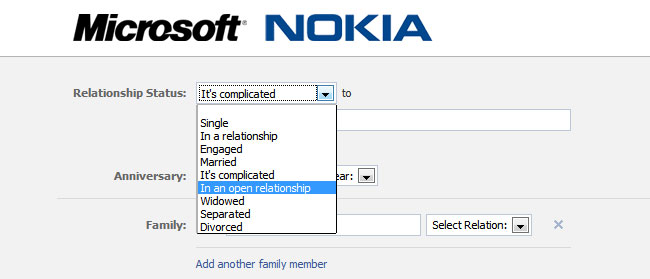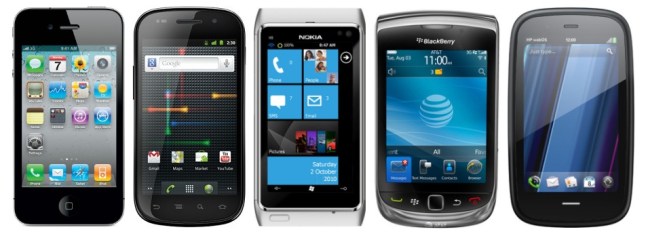
A few days ago, I wrote an article entitled “Windows Phone 7 and Nokia: two wrongs don’t make a right,” In it, I argued against the rumored possibility that Microsoft and Nokia would enter into an exclusive relationship over Windows Phone 7. I still contend that such an exclusive relationship would be bad for both companies. Luckily, Steve and Stephen agree with me.
Today Nokia CEO Stephen Elop was joined in London by Microsoft CEO Steve Ballmer (watch the video) and the two laid out the broad details of a new, “unique” partnership between their companies. Under the deal, Nokia will use Windows Phone 7 as its primary smartphone platform. It will slowly phase out Symbian and eventually push Microsoft’s OS into its lower-end feature phones as well. Microsoft will continue to market Windows Phone 7 as a licensed platform, but tightly work with Nokia above other hardware vendors when developing future improvements to the OS. Additionally, Nokia plans to share some of its key technologies, like Navteq turn-by-turn navigation, with the entire Windows Phone 7 ecosystem.
Is this a win for Nokia, a win for Microsoft, and a win for consumers? It could be.
Nokia’s CEO understands its problems
Most relieving to fans, investors, and partners of Nokia should be the complete competency and breadth of understanding Nikon’s new CEO Stephen Elop demonstrated during the company’s two press conferences today, which stretched several hours. He did not sugarcoat the struggles facing the Finnish phone maker and fielded a wide variety of questions with open honesty, explaining exactly why Nokia chose Windows Phone over Android, the pros and cons of dealing with Microsoft, its plans for MeeGo, where it sees Symbian in the years to come, its bloated R&D budget, and the challenges it faces competing with Apple and Android in the smartphone market. No major question was left unanswered.
Furthermore, he outlined a series of broad efforts Nokia is taking to restructure itself to work more efficiently with Microsoft and within its own divisions. The company will split up its smartphone and feature phone divisions and the newly appointed heads of departments like developer relations, and design will now report directly to the CEO. A new leader for North American sales will also be hired soon as Nokia makes a renewed push to have a presence in the United States.
A simple, organized partnership with Microsoft
On top of his refreshing openness and honesty, Elop (and Ballmer during his portion) outlined a very coherent, simple, and organized relationship between Microsoft and Nokia. Knowing that a complicated relationship could doom this collaboration from the start, Elop and Ballmer have structured the relationship between the two companies tight enough that it can be explained on a single sheet of paper. Microsoft is in charge of software, Nokia is in charge of hardware, and the two have several services that will be interconnected. These include Navtec maps & turn-by-turn navigation, Xbox Live, Office, Bing search, broad advertising by Microsoft, and local advertising by Nokia.
An open relationship
If Microsoft and Nokia had a relationship status on Facebook, it would have just been tweaked from “It’s Complicated” to “Open Relationship.” In this case, that’s a good thing. Mr. Elop reiterated several times how committed Nokia is to helping Microsoft make Windows Phone 7 a vibrant and successful platform not just for Nokia, but for a myriad of hardware makers. In fact, it was his top priority. Characterizing it as an “all boats rise” scenario, Elop indicated that, like Android, more competition and more companies choosing Windows Phone 7, the greater success Nokia would have due to the increased customer interest in the Windows Phone platform, increased developer interest, and increased competition to innovate and compete with more vendors.
Of course, Nokia has a few aces in its hole. It’s “unique” relationship with Microsoft will let it modify the Windows Phone 7 platform and offer differentiating features that will make Nokia phones a highly (hopefully more) attractive option than the competition. It can also continue to invest in Symbian, MeeGo, and other operating systems and test the waters on unique products whenever and however it chooses.
It’s now a three-, er, five-horse race

Assuming Nokia and Microsoft can each live up to and deliver on their ends of the bargain and assuming Nokia can get its act together and deliver well-designed, affordable, timely, and competitive handsets, this could be a winning move for Microsoft and Nokia. If Nokia can help Microsoft’s Windows Phone 7 platform succeed and grow competitive against the Android and Apple juggernauts, Microsoft will begin to gain a fighting chance in the massive OS wars ahead (nobody is safe). In return, Nokia will reap immense benefits of being the first and best partner with Microsoft. Its collaboration with Redmond will only help it retain its competitive edge in the years to come.
Unlike an exclusive relationship, which would squander Microsoft’s ability to compete with Android and eliminate Nokia’s internal software efforts, the companies have found a middle ground that, frankly, sounds like a great move for the Windows Phone platform, Nokia handset sales, and consumers. With Windows and Macintosh, we saw what a two-operating-system market was like. Fortunately it looks like the touch generation of OS’s will be a much more varied lot. As Mr. Elop said a few times today, it’s not just Android and Apple anymore. It is now a “three horse race.” Or, really, a five horse race if you think RIM and HP have a fighting chance.
Strong competition among vendors and platform makers, well that’s a win for everyone.


